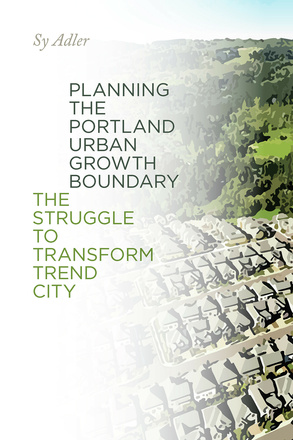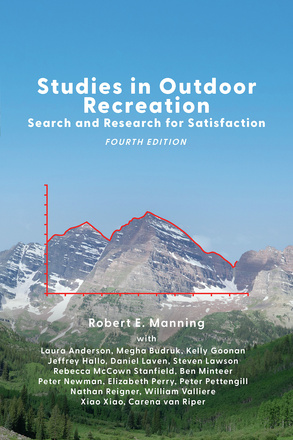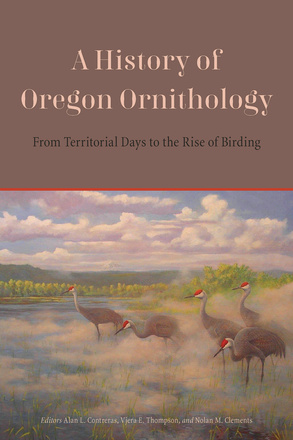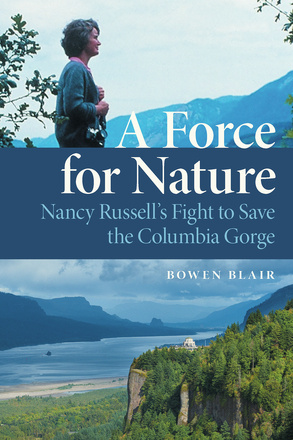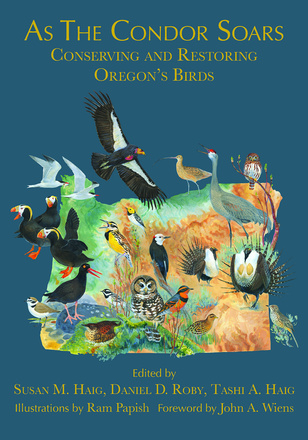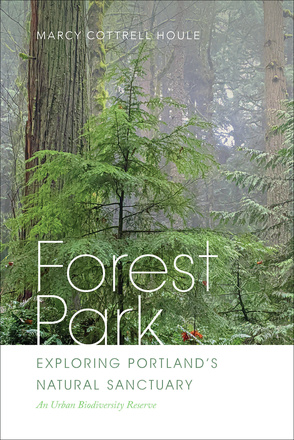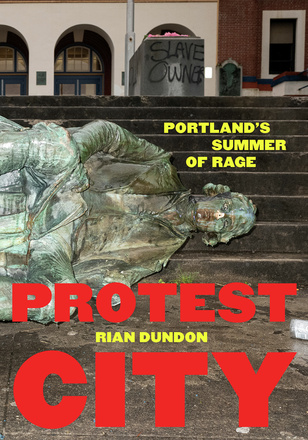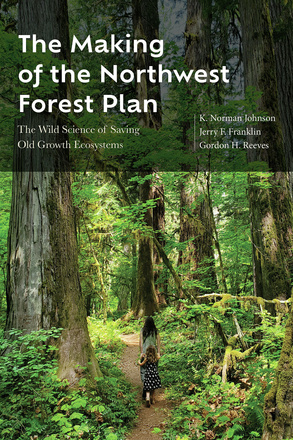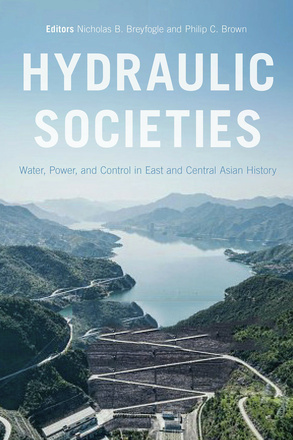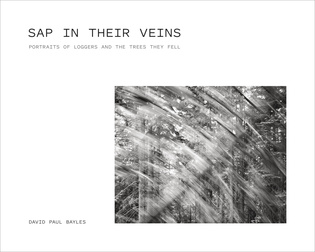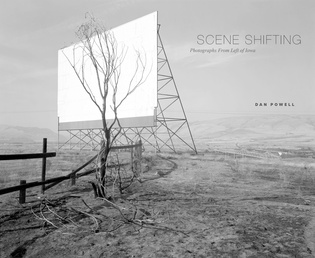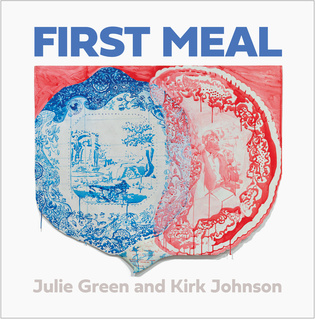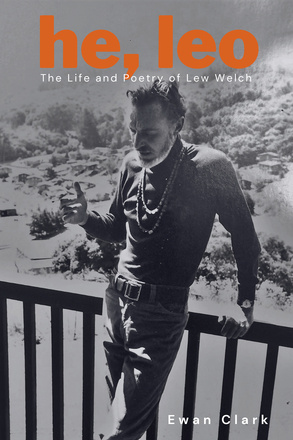Oregon State University Press
For fifty years, Oregon State University Press has been publishing exceptional books about the Pacific Northwest—its people and landscapes, its flora and fauna, its history and cultural heritage. The Press has played a vital role in the region’s literary life, providing readers with a better understanding of what it means to be an Oregonian. Today, Oregon State University Press publishes distinguished books in several academic areas from environmental history and natural resource management to indigenous studies.
Planning the Portland Urban Growth Boundary
The Struggle to Transform Trend City
In this companion volume to his 2012 book Oregon Plans: The Making of an Unquiet Land-Use Revolution, Sy Adler offers readers a deep analysis of planning Portland’s Urban Growth Boundary. Required by one of Oregon’s nineteen statewide planning goals, a boundary in the Portland metropolitan area was intended to separate urban land and land that would be urbanized from commercially productive farmland. After adopting the goals, approving the Portland growth boundary in 1979 was the most significant decision the Oregon Land Conservation and Development Commission has ever made, and, more broadly, is a significant milestone in American land-use planning.
Planning the Portland Urban Growth Boundary primarily covers the 1970s. Innovative regional planning institutions were established in response to concerns about sprawl, but planners working for those institutions had to confront the reality that various plans being developed and implemented by city and county governments in metro Portland would instead allow sprawl to continue. Regional planners labeled these as “Trend City” plans, and sought to transform them during the 1970s and thereafter.
Adler discusses the dynamics of these partially successful efforts and the conflicts that characterized the development of the Portland UGB during the 1970s—between different levels of government, and between public, private, and civic sector advocates. When the regional UGB is periodically reviewed, these conflicts continue, as debates about values and technical issues related to forecasting future amounts of population, economic activity, and the availability of land for urban development over a twenty-year period roil the boundary planning process.
Planning the Portland Urban Growth Boundary is an authoritative history and an indispensable resource for anyone actively involved in urban and regional planning—from neighborhood associations and elected officials to organizations working on land use and development issues throughout the state.
Studies in Outdoor Recreation
Search and Research for Satisfaction
Studies in Outdoor Recreation is a standard text in courses on parks and outdoor recreation, a guide to the scholarly literature for graduate students and researchers, and a reference book for managers and practitioners. The first book to review the social science literature on outdoor recreation, it examines studies from this broad, interdisciplinary field, integrates them into coherent chapters on relevant issues and topics, and synthesizes research findings into a body of knowledge. The final chapter presents a series of principles designed to guide park and outdoor recreation research and inform park and wilderness management. The book includes an extensive bibliography of 2,000 references and a guide to the social science literature that leads readers to primary source materials.
This fourth edition is fully updated and revised to reflect current research and new issues in the field, such as the evolving meaning of parks and wilderness, new models of parks, sustainable transportation in outdoor recreation, equitable access to outdoor recreation opportunities, the role of outdoor recreation in physical and mental wellbeing, the effects of climate change on outdoor recreation use and management, and theoretical and empirical issues in outdoor recreation research.
Contributors to the fourth edition include Laura Anderson, Megha Budruk, Kelly Goonan, Jeffrey Hallo, Daniel Laven, Steven Lawson, Rebecca Stanfield McCown, Ben Minteer, Peter Newman, Elizabeth Perry, Peter Pettengill, Nathan Reigner, William Valliere, Carena van Riper, and Xiao Xiao.
A History of Oregon Ornithology
From Territorial Days to the Rise of Birding
The study of birds was, in its early years, often driven by passionate amateurs in a localized context. A History of Oregon Ornithology takes readers from the Lewis and Clark expedition, through the professionalization of the field, and to the mid-twentieth century, focusing on how birding and related amateur field observation grew outside the realms of academia and conservation agencies.
Editors Alan Contreras, Vjera Thompson, and Nolan Clements have assembled chapters exploring the differences and interplay between the amateur and professional study of birds, along with discussions of early birding societies, notable observers, and ornithological studies. The book includes chapters on such significant ornithologists as Charles Bendire, William L. Finley, Ira Gabrielson, Stanley Jewett, and David B. Marshall. It also notes the sometimes-overlooked contributions of women to our expanding knowledge of western birds. Special attention is paid to the development of seabird observation, the impact of the Internet, and the rise of digital resources for bird observers.
Intended for readers interested in the history of Oregon, scientific explorations in the West, and the origins of modern birding and field ornithology, A History of Oregon Ornithology offers a detailed and entertaining account of the study of birds in the Pacific Northwest.
A Force for Nature
Nancy Russell's Fight to Save the Columbia Gorge
A Force for Nature is a biography of a person and a place. It describes how Nancy Russell, a woman with no political, fundraising, or organizing experience, mounted a national campaign to overcome eighty years of conflict—some of it later directed at her through slashed tires and death threats—to protect the Columbia River Gorge, one of the nation’s most scenic, historic, and threatened landscapes.
A Peculiar Paradise
A History of Blacks in Oregon, 1788-1940
Published in cooperation with Oregon Black Pioneers
A Peculiar Paradise: A History of Blacks in Oregon, 1788–1940, remains the most comprehensive chronology of Black life in Oregon more than forty years after its original publication in 1980. Elizabeth McLagan’s work reveals how in spite of those barriers, Black individuals and families made Oregon their home and helped create the state’s modern Black communities. A longtime resource for those seeking information on the legal and social barriers faced by people of African descent in Oregon, the book is available again through this co-publication with Oregon Black Pioneers, Oregon’s statewide African American historical society. The revised second edition includes additional details for students and scholars, an expanded reading list, a new selection of historic images, and a new foreword by Gwen Carr and afterword by Elizabeth McLagan.
As the Condor Soars
Conserving and Restoring Oregon's Birds
As the Condor Soars focuses on the increasing role that ornithologists played in public agencies, changing ideas about ecosystems, and conservation debates in Oregon. These themes are most clearly seen in the battles over the northern spotted owl and the development of the Northwest Forest Plan. Contributors to this volume also discuss new developments in the study of birds, such as sound studies, and connections between ornithologists and artists. The volume includes illustrations by Ram Papish.
The Jackson County Rebellion
A Populist Uprising in Depression-Era Oregon
The Jackson County Rebellion explores a dramatic if little-known populist insurgency that captured national attention as it played out in rural Oregon. Jeffrey LaLande traces the rebellion’s roots back to the area’s tradition of protest, including the Ku Klux Klan of the 1920s, then focuses on Jackson County’s politics of upheaval during the worst days of the Great Depression. The broad strokes of the episode may be familiar to contemporary readers, with demagogues fanning rage and relentlessly accusing an elite of corruption and conspiracy.
Two inflammatory local newspapers, one owned by wealthy orchardist Llewellyn Banks and the other by politician Earl Fehl, became the vehicles by which these men won followers. Partners in demagoguery, Banks and Fehl created a movement that very nearly took over county government through direct action, ballot theft, and threats of violence. Among those opposing the two men was Harvard-educated Robert Ruhl, owner/editor of the Medford Mail Tribune. Despite boycotts and threats of sabotage, Ruhl ran a resolute editorial campaign against the threat in his Mail Tribune, which won a Pulitzer Prize for its reporting on the uprising.
The rebellion blazed hotly but not for long. Its end was marked by the arrest of its leaders after the fiercely contested 1932 election and by Banks’s murder of the police officer sent to arrest him. Placing the Jackson County Rebellion squarely within America’s long tradition of populist uprisings against the perceived sins of an allegedly corrupt, affluent local elite, LaLande argues that this little-remembered episode is part of a long history of violent conflict in the American West that continues today.
Protest City
Photographing Portland's Summer of Rage
The Making of the Northwest Forest Plan
The Wild Science of Saving Old Growth Ecosystems
My Name is LaMoosh
My Name is LaMoosh is the life story of Warm Springs Tribal Elder Linda Meanus. She grew up with her grandma Flora Thompson and grandpa Chief Tommy Thompson near Celilo Falls, a mighty fishery on the Columbia that was flooded in 1957 by the construction of The Dalles Dam. Linda persevered through this historic trauma and life’s challenges to teach young people about the Indigenous ways of the Columbia River. Intended for early readers to learn more about Native American history through a first-hand account, the book is also a reminder that Indigenous people continue to maintain a cultural connection to the land and river that gave them their identity.
My Name is LaMoosh includes fact boxes that provide historical, cultural, and environmental context for Linda’s personal story. Hundreds of books exist about Lewis and Clark and their journey of “discovery.” This book balances our understanding of American history with the long-neglected voices of Indigenous people. Linda’s story is not just about historic trauma but also about resilience, perseverance, and reciprocity.
Published in cooperation with Confluence
They Never Asked
Senryu Poetry from the WWII Portland Assembly Center
In 1942, after Executive Order 9066 was issued, Japanese American families were removed from their homes in Oregon and the Yakima Valley and sent to the Portland International Livestock Exposition Center, where they were housed in converted animal stalls. The Wartime Civil Control Administration forcibly held these Japanese Americans at the Portland Assembly Center until September 1942, when they were transferred to newly built permanent incarceration camps at Minidoka, Heart Mountain, and Tule Lake.
The Japanese American communities in Oregon and southern Washington were relatively small and many of the detainees knew each other; they drew on existing family and community networks to help each other through the long summer, living in inhumane conditions under the constant threat of violence. Several members of Bara Ginsha, a Portland poetry group, decided to continue their work while imprisoned at the center, primarily by writing senryū, a type of Japanese poetry related to haiku.
They Never Asked is a collection of work produced by Bara Ginsha members in the WCCA camp, based on a journal kept by Masaki Kinoshita. The senryū collected here were written by a group of twenty-two poets, who produced hundreds of poems. Individually, the poems reflect the thoughts and feelings the authors experienced while being detained in the center; collectively, they reflect the resilience and resistance of a community denied freedom. Editors Shelley Baker-Gard, Michael Freiling, and Satsuki Takikawa present translations of the poems alongside the originals, supplemented by historical and literary context and a foreword by Duane Watari, Masaki Kinoshita’s grandson.
Hydraulic Societies
Water, Power, and Control in East and Central Asian History
Hydraulic Societies explores the linked themes of water, power, state-building, and hydraulic control. Bringing together a range of ecological, geographical, chronological, and methodological perspectives, the essays in this book address how humans have long harnessed water and sought to contain its destructive power for political, economic, and social ends. Water defines every aspect of life and remains at the center of human activity: in irrigation and agriculture; waste and sanitation; drinking and disease; floods and droughts; religious beliefs and practices; fishing and aquaculture; travel and discovery; scientific study; water pollution and conservation; multi-purpose dam building; boundaries and borders; politics and economic life; and wars and diplomacy.
From the earliest large irrigation works thousands of years ago, control over water has involved control over people, as the essays in this volume reflect. The intersections of water and political, economic, and social power historically span international as well as domestic politics and operate at scales ranging from the local to the global. The authors consider the role of water in national development schemes, water distribution as a tool of political power, international disputes over waterways and water supplies, and the place of water in armed conflicts. They explore the ways in which political power and social hierarchies have themselves been defined and redefined by water and its control, how state leaders legitimized their rule both culturally and economically through the control of water, and how water management schemes were a means to impose and refine colonial power.
An Ocean Garden
The Secret Life of Seaweed
In this captivating book, artist and avid beachcomber Josie Iselin reveals the unexpected beauty of seaweed. Produced on a flatbed scanner, Iselin’s vibrant portraits of ocean flora reveal the exquisite color and extraordinary forms of more than two hundred specimens gathered from tidal pools along the California and Maine coasts. Her engaging text, which accompanies the images, blends personal observation and philosophical musings with scientific fact. Now available in paperback for the first time, this edition includes a new foreword and updated nomenclature. An Ocean Garden is a poetic and compelling tribute to the natural world and the wonder it evokes.
There Was an Old Woman
Reflections on These Strange, Surprising, Shining Years
Andrea Carlisle isn’t struggling with her new identity as the Old Woman in the ways society seems to think she should. In fact, she is finding her later years to be an extraordinary and interesting time. In trying to understand the discrepancy, she interrogates the sources of negativity in literature, art, and received wisdom that often lead women to dread this transformative time of life. Given the cultural pervasiveness of ill will toward older women, it is small wonder that growing older is not seen as a natural, even desirable, process. Although some elements of aging are hard to reckon with, there is much to make use of and delight in, along with mysteries, surprises, and revelations.
In these personal essays, Carlisle looks for new ways to bring herself more fully to this time of life, such as daily walks with other women and connecting to the natural world that surrounds her houseboat on an Oregon river at the foot of a forest. She writes about experiences shared with many, if not most, older women: wondering at her body’s transformation, discovering new talents, caregiving, facing loss, tuning in to life patterns and drawing strength through understanding them, letting go (or not) of pieces of the past, and facing other changes large and small.
Those curious about, approaching, or living in old age will find wisdom and insight in her unique perspective. In a voice that rings with clarity, humor, and humility, Carlisle shows us that old age is not another country where we can expect to find the Old Woman grimly waiting, but is instead an expansion of the borders in the country we’re most familiar with: ourselves.
Sap in Their Veins
Portraits of Loggers and the Trees They Fell
In 1972 David Paul Bayles left the suburbs of Los Angeles for a summer job as a logger. Then, instead of heading off to photography school in the fall as planned, he stayed. Four years later, celebrating the end of his last day of logging with his crewmates over a few beers, the woods boss toasted him: “We wish you well in photo school and please don’t forget us dirty old loggers.”
Bayles didn’t. A decade later he returned to the forests of the northern Sierras, Mount Shasta, and Redwood coast regions to create a photo exhibition that traveled through California and Oregon. In 2004 he expanded the project, focusing on how northern California’s logging industry had changed and altered the lives and culture of the men with whom he’d spent long days working in forests, men who worked with their hands and intuition. He discovered that with the increased industrialization of the forest and the arrival of machine-oriented tree felling, work that had relied on experience in meeting challenges, on camaraderie and trust, was in danger of becoming more like a robotically-operated assembly line. As one logger told Bayles, “They’re taking the Paul Bunyan out of logging.”
There’s a poignancy to these portraits and the stories they tell of changing times, hard times, and the humor found in between the dire risks loggers encounter every day. Bayles’ photographs and oral histories introduce us to men who love the forests in which they’ve spent, and sometimes risked, or lost, their lives. Many lament the unnecessary loss of trees and the advent of practices favoring quick profits over safety and sustainability. Bayles’ work is a testament and tribute to a fast-disappearing chapter of American woodsmen, one that may soon be forgotten.
Scene Shifting
Photographs from Left of Iowa
In an introductory essay to Scene Shifting, Dan Powell speaks of his father’s influence on him in his youth. He describes growing up in the 1950s and 60s in the Roza District, a spacious agricultural valley that was etched out of the sage desert in South Central Washington. He also traces the impact that the nearby Hanford Atomic Works had on his family and the region. At an early age Powell’s concept of the American West was shaped by all three of these factors. The 101 black and white duotone images featured in this compelling volume are mostly from large format negatives (8x10 and 4x5). They highlight a particular period in Powell’s art practice, the 1980s and 90s, when he photographed in the high desert country of Oregon and Washington, as well as in Nevada, California, Arizona, Idaho, and Utah. Several images from the Midwest mark his graduate school experience and first teaching position, before he migrated back to the West to teach photography at the University of Oregon. In photographing the West, Powell was interested in the land as a dynamic theater, the constant shifting of events that moved through his view, on and off road. Points of intersection, the clashing of events where humans interface with the land, occur often within this fabric of beauty and wildness. Powell’s view of the West is broad and diverse, from the visual harmony found in the vastness of space and light, to ironic tensions found through chance and close observation. On one level, Powell was simply measuring his vision of the land against the memories of his childhood. In the second essay, “The Geography of a Life,” esteemed curator, historian, and author Keith F. Davis sheds light on the nature and particular qualities of the work, and on how it is deeply embedded in Powell’s lifelong experience with the West.
First Meal
Wrongful convictions haunt the American criminal justice system, as revealed in recent years by DNA and other investigative tools. And every wrongfully convicted person who walks free, exonerated after years or decades, carries part of that story. From those facts, artist Julie Green posed a seemingly simple question: When you have been denied all choice, what do you choose to eat on the first day of freedom?
In the small details of life at such pivotal moments, a vast new landscape of the world can emerge, and that is the core concept of First Meal. Partnering with the Center on Wrongful Convictions at Northwestern University’s Pritzker School of Law, Green and her coauthor, award-winning journalist Kirk Johnson, have created a unique melding of art and narration in the portraits and stories of twenty-five people on the day of their release.
Food and punishment have long been intertwined. The tradition of offering a condemned person a final meal before execution, for example, has been explored by psychologists, filmmakers, and others—including Green herself in an earlier series of criminal-justice themed paintings, The Last Supper. First Meal takes on that issue from the other side: food as a symbol of autonomy in a life restored. Set against the backdrop of a flawed American legal system, First Meal describes beauty, pain, hope and redemption, all anchored around the idea—explored by writers from Marcel Proust to Michael Pollan—that food touches us deeply in memory and emotion.
In Green’s art, state birds and surreal lobsters soar over places where wrongful convictions unfolded, mistaken witnesses shout their errors, glow-in-the-dark skylines evoke homecoming. Johnson’s essays take us inside those moments—from the courtrooms where things went wrong to the pathways of faith and resilience that kept people sane through their years of injustice. First Meal seeks to inform and spread awareness, but also celebrate the humanity that unites us, and the idea that gratitude and euphoria—even as it mixes with grief and the awareness of loss—can emerge in places we least expect.
Constructing a Democracy
The History, Law, and Politics of Redistricting in Oregon
Every ten years, states go through the process of redistricting: choosing how to divide up and apportion their state and federal legislative districts. How the districts are drawn can determine which party wins the district and therefore controls the legislature or Congress. Although the process may be different in every state, the questions are the same: Who draws the maps? Who can prevent gerrymandering? What power do legislatures, governors, courts, and political parties have to influence the process and the outcomes?
In Constructing a Democracy, legal scholar Norman Williams presents a comprehensive history of legislative and congressional redistricting in Oregon. Because redistricting impacts the representativeness of the ensuing legislative body, Oregon’s constitutional framers, legislators, and courts alike have understandably focused on developing legal rules to constrain the redistricting process. Williams is primarily interested in identifying and understanding the scope of those rules: What legal constraints have existed over time? How aggressively have the courts enforced those restraints? How have political actors undertaken the redistricting task in light of the various rules and the judicial pronouncements regarding those constraints?
The redistricting process in Oregon has not drawn national attention the way it has in states like North Carolina and Pennsylvania. But the process in Oregon is notable in several ways, including an early attention to malapportionment, the use of the initiative to reform the process, and the impact of women leaders on the redistricting process. The Oregon process, however, has also notably lagged behind other states, particularly in considering issues of race and minority representation and preventing gerrymandering.
He, Leo
The Life and Poetry of Lew Welch
Largely remembered for his mysterious disappearance in May 1971, Lew Welch was an important voice of the Beat Generation and San Francisco Renaissance. He spoke of key issues that America was facing in the aftermath of World War II—from the rise of consumerism and complacent suburban sensibilities to the threat of environmental disaster. He championed American speech, idioms, and identities. He found inspiration in the words of Gertrude Stein and William Carlos Williams, in the philosophies of Senzaki and the Buddha, and in his myriad friendships with some of the most renowned and revered poets, musicians, and artists of the 1950s and 1960s. His search for authenticity in language and poetry was a small part of a far greater search to establish a clear sense of himself.
He, Leo investigates Welch’s life and work in a chronological fashion, structured around Welch’s own notion of how three main aspects of his life—The Man, The Mountain, and The City—were interdependent. From his birth until his disappearance and presumed death, Welch’s life was often defined by problems, including a complex relationship with his mother, a long struggle with alcohol, and a fluctuating mental state. He was open and candid about everything, a fact that is evident in all aspects of his work.
Each of the three main sections of He, Leo includes key poems, essays, and events—both personal and cultural—to help establish Welch’s importance as a prominent poet and figure during the San Francisco Renaissance. Despite his crushing self-criticism and his reputation as a “friend of,” he was a bona fide poet with a strong voice and message of his own. With this first full-length biography, Ewan Clark restores Lew Welch to his rightful place as an important member of a significant American literary and cultural movement.

